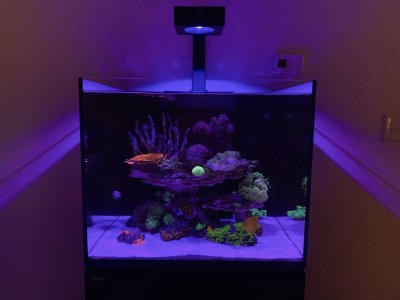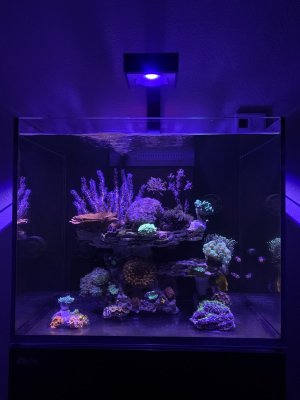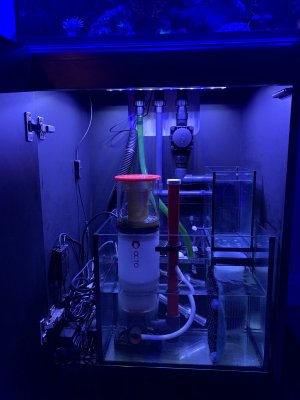Good evening, so i usually do a water test every saturday around 9/10pm.
this are my test results from today.
Salinity 1.024
Calcium 420
Alkalinity 7.6
Mag 1720
Phosphate 0.90 —Hanna
Temp 80.3
pH 7.9
Nitrate 20
Ammonia 0.2
RedSea 170
My tank has been set up for a few months now. About 2 days ago i finished removing my sandbed (maybe 1inch) and went barebottom. the fish seem fine and the corals also look fine, i just doses 5ml of Seachem AmGuard just in case, and im going a 25 percent water change tomorrow.
Here is my question, does anyone knows whats going on? im still new to all this test and is getting me so confused. How are phosphate and nitrate so high. if anyone can help, i will really appreciate it
i attached a pic of the tank when it had sand and another pic i just took ( maybe 5 mins ago)



this are my test results from today.
Salinity 1.024
Calcium 420
Alkalinity 7.6
Mag 1720
Phosphate 0.90 —Hanna
Temp 80.3
pH 7.9
Nitrate 20
Ammonia 0.2
RedSea 170
My tank has been set up for a few months now. About 2 days ago i finished removing my sandbed (maybe 1inch) and went barebottom. the fish seem fine and the corals also look fine, i just doses 5ml of Seachem AmGuard just in case, and im going a 25 percent water change tomorrow.
Here is my question, does anyone knows whats going on? im still new to all this test and is getting me so confused. How are phosphate and nitrate so high. if anyone can help, i will really appreciate it
i attached a pic of the tank when it had sand and another pic i just took ( maybe 5 mins ago)




















